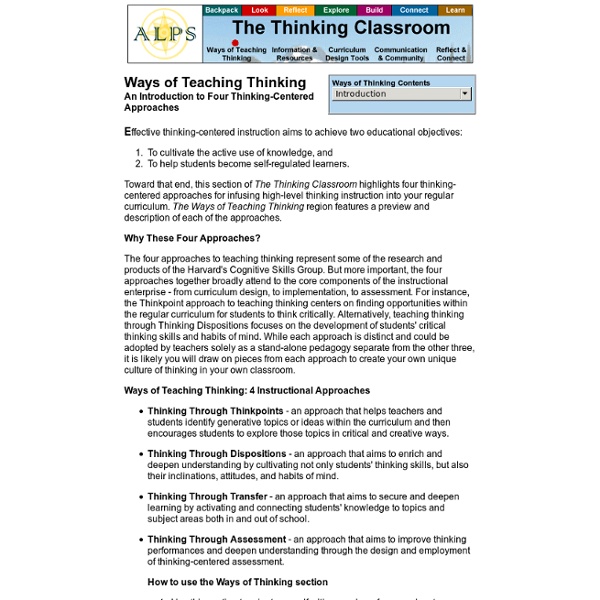CTL Events - Award-Winning Teachers on Teaching
Below is a list of memorable lectures on teaching, organized according to topic, by teaching-award-winning Stanford faculty. Click on the links immediately below to jump to the topic or talk that interests you. Topics: Case Method Teaching: Professor Mary Barth, Graduate School of Business April 13, 2000 Professor Keith Loague, Department of Geological and Environmental Sciences April 19 , 2001 Controversial Subject Matter in the Classroom: Professor David B. Professor Luis Fraga, Political Science November 7, 1996 Professor Joel Beinin, History January 30, 2003 Professor Christopher Bobonich, Philosophy November 16, 2006 Course Design: Professor Russell Fernald, Psychology and Human Biology May 1, 1997 Teaching as Learning: The Process of Designing a New Course Professor Leonard Ortolano, Civil and Environmental Engineering November 4, 1999 Critical Thinking: Cultivating the Capability for Rigorous Critical Analysis: A Vital Pedagogical Task Professor Laura Carstensen, Psychology February 27, 2003
Top 20 Websites No Teacher Should Start the 2010-2011 Year Without
I have to tell you that it was a tough call to make these decisions, especially when we’re talking every teacher no matter what grade level or subject, but I hope that you find a couple of gems to put away in your virtual treasure box. You may have others you’d like to add to the list. Please post them in the comments for all of us to explore. A great photo editing tool is a must for teachers and I recommend Aviary, LunaPic, Picnik, or BeFunky with some being simpler than others, but all having unique features. Creaza and Jaycut are answers to the Windows XP Movie Maker and Flipcam problem. Delicious or Diigo are online bookmarking networks teachers need. Doodle is a groovy scheduling tool teachers can use when setting up a collaborative work meeting or building social committee event. Dropbox is one of my absolute favorite tools shared with me by Intel Teach buddies Glen Westbrook and Jill Summers. Google Language Translator does a fairly decent job of language translation.
Theories of Learning -
Learning: Theory and Research Behaviorist teaching methods have proven most successful in areas where there is a “correct” response or easily memorized material. Background View of Knowledge View of Learning View of Motivation Implications for Teaching Background Methodological behaviorism began as a reaction against the introspective psychology that dominated the late 19th and early 20th centuries. The mentalistic problem can be avoided by going directly to the prior physical causes while bypassing intermediate feelings or states of mind. Radical behaviorists such as Skinner also made the ontological claim that facts about mental states are reducible to facts about behavioral dispositions. View of Knowledge Behaviorists such as Watson and Skinner construe knowledge as a repertoire of behaviors. View of Learning From a behaviorist perspective, the transmission of information from teacher to learner is essentially the transmission of the response appropriate to a certain stimulus. Reference
Have Fun Teaching
Khan Academy
100 Most Inspiring and Innovative Blogs for Educators
October 1st, 2005 Whether you work at elementary schools or online colleges, you will find that being a teacher is a difficult and often thankless job. Between lesson plans, unengaged students, and new emerging technologies, teachers need help now more than ever. Luckily, there are a few resources out there for educators looking for tips, empathy, and inspiration. Blogs are a great way for teachers to connect with other great teachers around the world, find advice and inspiration, and learn new, cutting-edge teaching strategies. By visiting the 100 blogs below, you will find answers to all of your questions, as well as valuable teaching resources. General Teaching Blogs Get the latest tips, tools, and advice sure to help just about every teacher out there. 1. 2. 3. 4. 5. 6. 7. dy/dan: Dan Meyer is a high school math teacher stationed outside Santa Cruz, CA. 9. 10. 11. 12. 13. 14. 15. 16. 17. 18. 19. 21. 22. 24. 25. 26. 27. 28. 29. 30. 31. 32. 33. 34. 35. 36. 37. 38. 39. 40. 41. 42. 43. 44.



